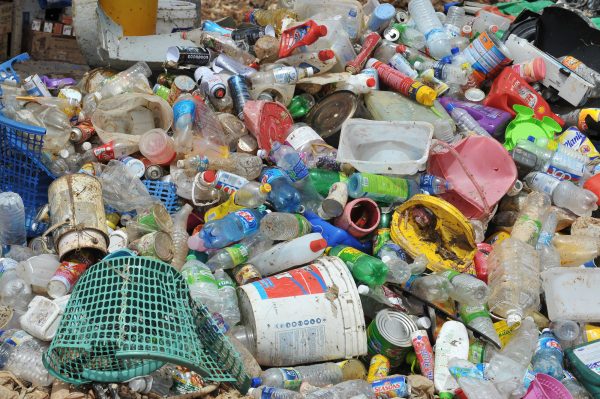
Negotiations on a new Global Plastics Treaty will hold a second session on May 29 to June 2 in Paris, France. In the first meeting in Uruguay, there was hope that a strong, ambitious treaty would end the age of single-use plastics and ignite a revolution in reuse and refill.
Japan, one of the committee members representing Asia and the Pacific together with Jordan, is taking a rather worrisome position. While Japan might be associated with clean streets, tidy public spaces, and cleaning football stadiums after the match, the way Japanese keep the country tidy might not be “clean” after all.
Shockingly, only 22 percent of the plastics collected in Japan are materially recycled, while the majority of the rest are sent to incineration under the guise of “thermal recycling” – adding more fossil carbon to our planet that is already burdened by the climate crisis.
Out of the 22 percent of plastic that is sent for recycling, about 40 percent is exported outside Japan, especially to countries without sound waste management systems, raising doubts about their ultimate fate. For example, Malaysia was ranked the top importer of Japanese plastic waste in 2019, but 82.5 percent of Malaysia’s solid waste is reportedly disposed of in landfills.
Japan’s published position toward the Global Plastics Treaty lays too great an emphasis on marine litter, indicating that sound waste management and recycling would close the leakage and forestall additional marine pollution. However, burning plastics is certainly not an option in the midst of a climate crisis, and so far, recycling doesn’t meet the needs of our excessive consumption. The world will never catch up with expanding production of single-use plastics; it’s like plugging the leaks without turning off the tap.
The recent G-7 Climate, Energy, and Environment Ministerial meeting, which concluded in April in Sapporo, offered some slight hope. Japan led countries to commit to ending additional plastic pollution by 2040 without limiting the scope to only marine plastic pollution. However, we need to see if Japan advocates for the same position during the upcoming negotiation in Paris.
Another concern is that Japan’s position relies too much on voluntary actions rather than agreed global rules. It suggests that measures related to plastic production and use should not be “blanket bans,” but rather should take into account “national circumstances and socioeconomic impacts.” However, the need for stricter regulations and evidence-based measures to address plastic pollution is already abundantly clear: Other countries and groups such as the High Ambition Coalition (HAC) of 53 states including Rwanda, Norway, Canada, South Korea, and the European Union are calling for reductions in the production of primary plastic polymers, and eliminating and restricting specific plastic polymers.
Although addressing plastic pollution requires innovation and proactive national action plans to find the best solutions for each country and society, we are standing at a crossroads between plastic waste’s exponential growth, or capping and reducing plastic use for our health, communities, and climate. To choose right, we should start the conversation right.
First and foremost, the treaty must reduce plastic production and use. Time-bound reduction targets must be set to immediately peak, or cap plastic production. In particular, single-use plastics and problematic plastics must be completely phased out as they pose significant risks to both our environment and health.
Second, to accomplish this, the treaty needs global rules applicable to all countries. It would be unrealistic to believe that national action plans alone would eliminate harmful substances from the environment. The HAC has acknowledged that a patchwork of voluntary and regional-based approaches has not worked, and even the Business Coalition thinks we need binding global rules. While important, national action plans are not a silver bullet to end this crisis. We have to discuss the more suitable roles that such action plans can play to reduce plastics use and create a shift toward a reuse and refill-centered economy.
Last, to attain a strong and ambitious treaty, governments must convene open, inclusive, and justice-centered discussions for people being harmed across the plastics supply chain, and ensure that the negotiations remain free from interference by the fossil fuel industry. At the very least, member states should oblige parties with conflicting interests to disclose and be explicit about their association. Big oil is a big threat to an ambitious plastics treaty. If the industry has its way, plastic production could double within the next 10-15 years, and triple by 2050.
An ambitious Global Plastics Treaty will keep oil and gas in the ground, hold big polluters accountable for their excessive plastic production, and ensure a just transition for workers across the plastics supply chain to a low-carbon, zero-waste, reuse-based economy. A strong plastics treaty is the key to securing a clean, safe planet for ourselves and for generations to come.
In this once-in-a-generation opportunity to solve the plastics crisis, Japan has to choose whether it will live up to its “clean” image, or throw it away. With a fairly propitious start at G-7, we are eager to see more ambition in negotiations. Actions in the negotiation room speak louder than words at press conferences, because they determine the fate of our environment.
Global Plastics Treaty Will Test Japan’s Clean Image
Source: Frappler

0 Comments